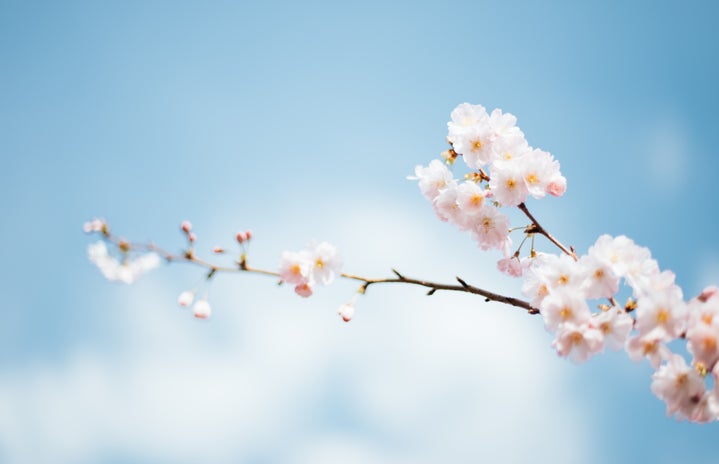Happy International Women’s Day!
March is Women’s History Month, and all of Her Campus is celebrating! March 8, or International Women’s Day, was first observed in Austria, Denmark, Germany, and Switzerland on March 19, 1911. The holiday is now nationally recognized in 27 countries. Celebrations usually involve men honoring their mothers, wives, girlfriends, sisters, teachers, etc. with gifts. March 8 also inspires political rallies, demonstrations, and conferences discussing gender equality.
It’s easy to think of women’s history as uniformly depressing. As important as it is to be honest about the ugly truths of humanity’s shared history, a good number of women overcame societal expectations and disparaging laws to accomplish some amazing things. In honor of International Women’s Day, enjoy these fun, fabulous, and sometimes frightening facts about women’s history:
1. Most of the world’s earliest-known art was done by women. Scientific analysis of handprint “signatures” of prehistoric cave paintings discovered that based on proportions of male and female hands, 75% of the hand stencils were by women.
2. Though women were historically excluded from the battlefield, warrior women included female Vikings, known as shieldmaidens; female gladiators, known as gladiatrixes; and female samurai, known as onna-bugeisha.
3. Throughout history, women’s sexuality has often been suppressed. This has resulted in some seriously weird beliefs about gynecology and women’s bodies:
- Hippocrates, the father of Western medicine, believed in the “wandering womb,” or that the uterus moved around the body of its own accord.
- The ancient Greeks believed lesbians had enlarged clitorises they used like penises. Some 15th century scientists refused to believe in the clitoris.
- Aristotle believed women were a deformed version of men, with malformed genitals inside the body due to too much “cold” and not enough “heat.”
- Cultures worldwide have longed viewed menstruation as either sacred and powerful, or, more often, taboo and impure. It was believed that anything a menstruating woman touched, such as bread or fruit trees, would spoil.
- “Hysteria” was a common medical diagnosis exclusively for women. The vague term was applied to any number of symptoms, such as irritability, depression, or sexual desire. Doctors ‘treated’ hysterical women by manually stimulating their genitals and later, with the invention of the vibrator.
- In the 1800s rumors spread in the West of Asian women having “sideways slits”. This myth resurfaced again during WWII and the Korean War.
- Women could not get pregnant from rape, because conception required a “seed” produced during orgasm. So if a woman was pregnant, she enjoyed it and was not raped. Sadly, some politicians today still believe untrue facts about rape.
4. There was a secret language used only by women. Nushu, or “women’s writing”, was a script of Chinese characters invented by women in Jiangyong County in Hunan Province. Women in traditional Chinese society were often illiterate, so nushu was passed down from mother to daughter and used to write letters, stories, and poems, which were embroidered or painted onto fans and exchanged between female relatives and friends. The language was kept secret from men for hundreds of years and nearly died out after 20th century cultural shifts improved access to education for women. The last proficient user died in 2004, but a revival of interest has led to efforts by the Chinese government to preserve it, and some women are learning it.
5. Literature owes a great debt to the legacy of ladies. The Tale of Genji, a 12th-century classic of Japanese literature written by Heian lady-in-waiting Murasaki Shikibu, is considered the world’s first novel. Mary Shelley invented science fiction at 19 with her novel Frankenstein, and the first “masked hero with a secret identity” was the Scarlet Pimpernel, a swordsman who saves aristocrats from the guillotine during the French Revolution, created by novelist Emma Orczy; he would be the prototype for later characters like Zorro and modern comic book superheroes.
6. For much of history, ‘fashion victim’ was a literal term. Terrifying beauty and clothing trends of yesteryear include:
- White face paint containing lead, popularized by Queen Elizabeth I
- Corsets, which were so tightly laced women not only had trouble breathing, but sometimes got broken ribs or internal bleeding from compressed organs.
- The crinoline, a massive wood or metal cage-like hoop skirt worn under the dress. There are accounts of the massive crinolines causing women to be swept out to sea by gusts of wind and drowning, getting entangled in the wheels of carriages, and knocking over candles and going up in flames.
- Hobble skirts, extremely tight skirts popular in the early 20th century, which did not kill anyone (that we know of) but severely restricted walking.
- The Chinese tradition of foot binding, in which girls as young as 4 had the bones in their feet broken and wrapped in tight binding to prevent them create tiny “lotus feet,” with the ideal length, a “Golden Lotus,” around 3 inches long. Foot binding was so disfiguring walking was extremely painful.
7. Recent efforts have been made to promote the encouragement of women and girls in STEM (science, technology, engineering, and mathematics) careers, in which they are underrepresented. Besides the famous Marie Curie, who discovered radiation, Ada Lovelace, who created the first algorithm, is considered the first computer programmer; Lise Meitner discovered nuclear fission; Emmy Noether and Chien Shiung-Wu pioneered mathematics and experimental physics, respectively; and Grace Hopper invented the compiler and first programming language.

